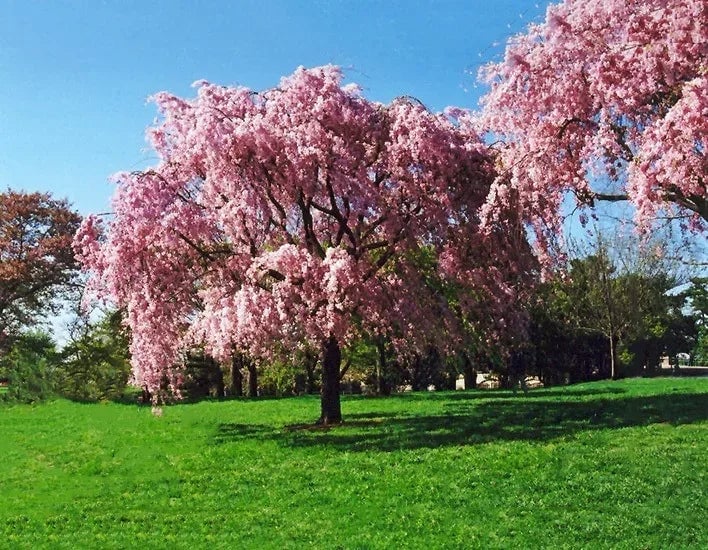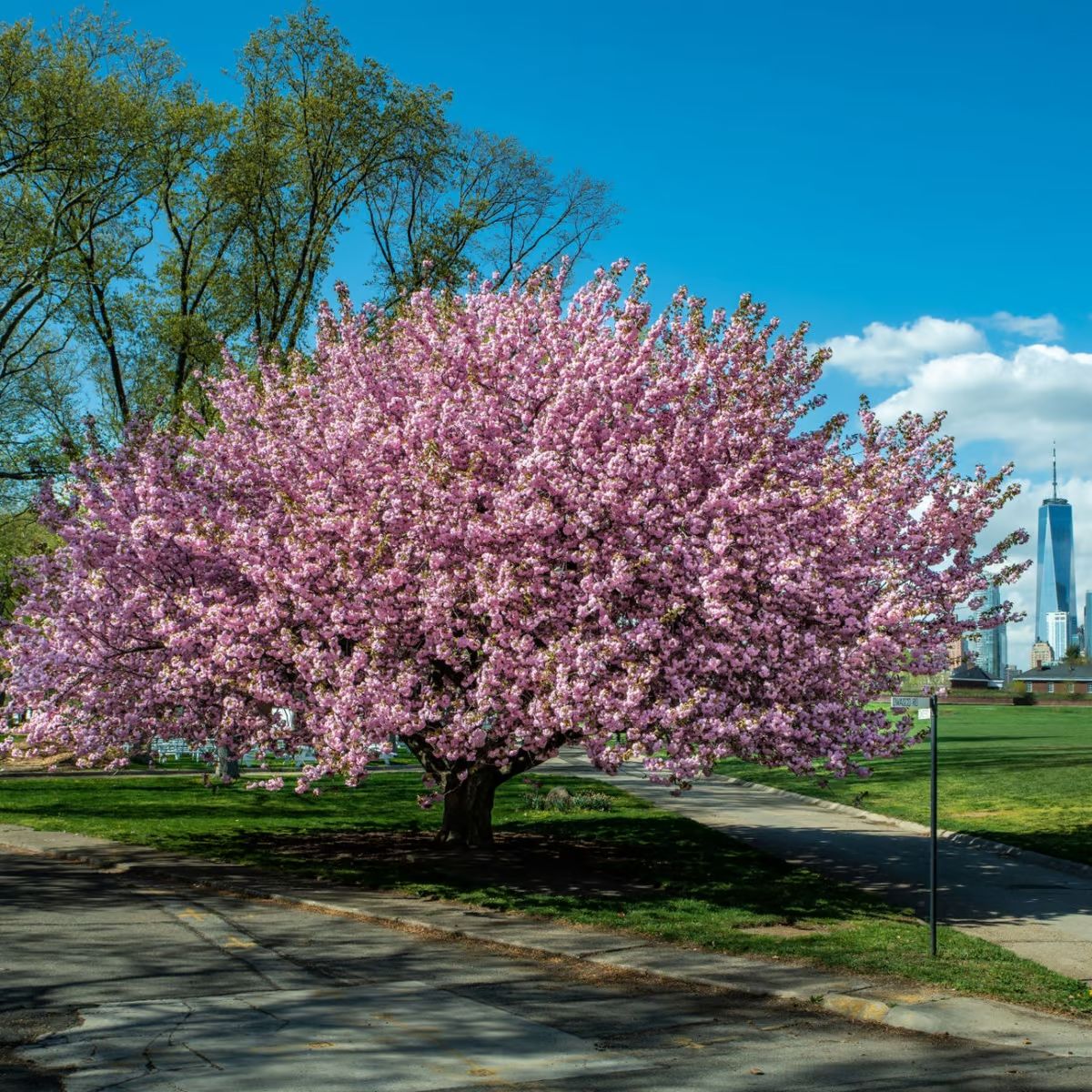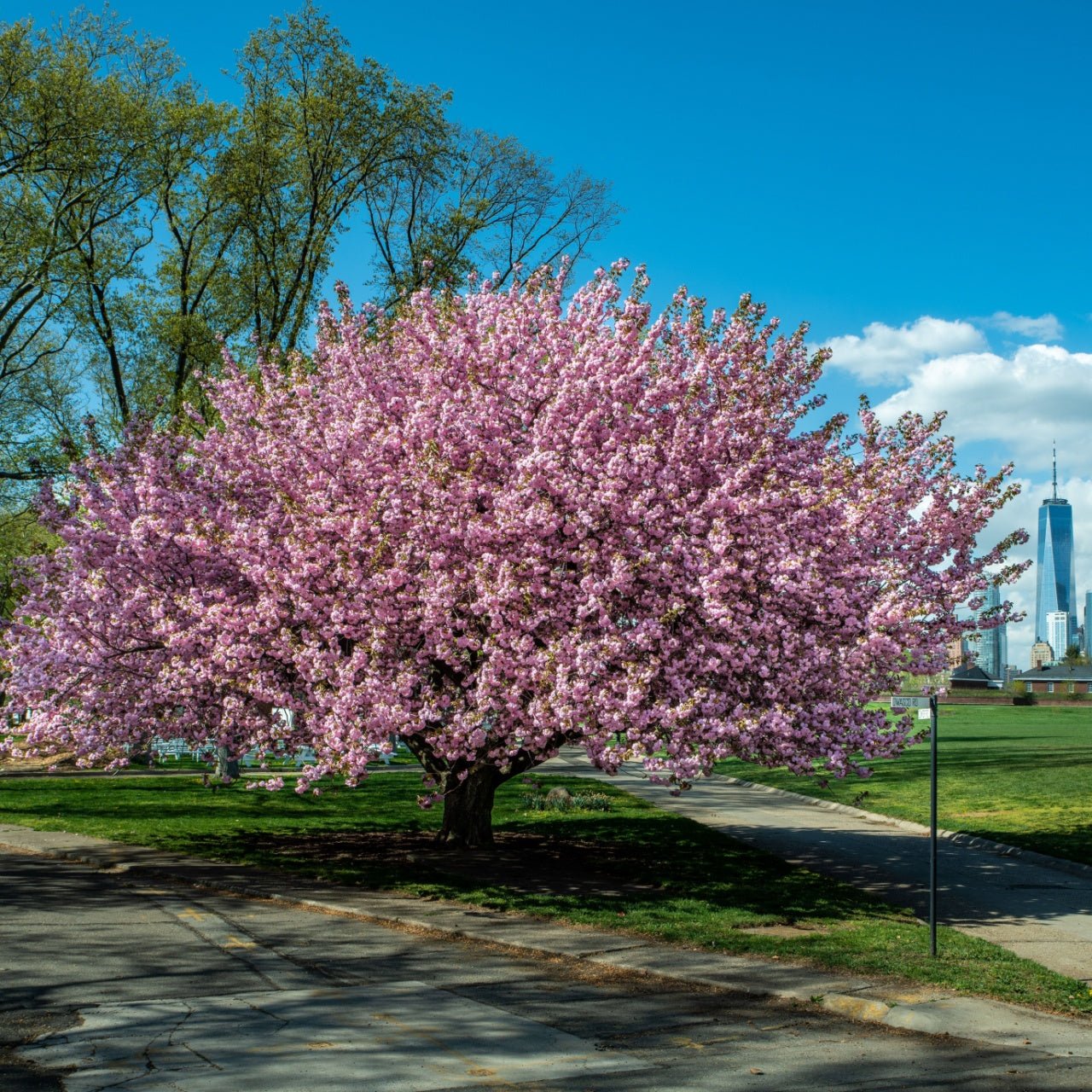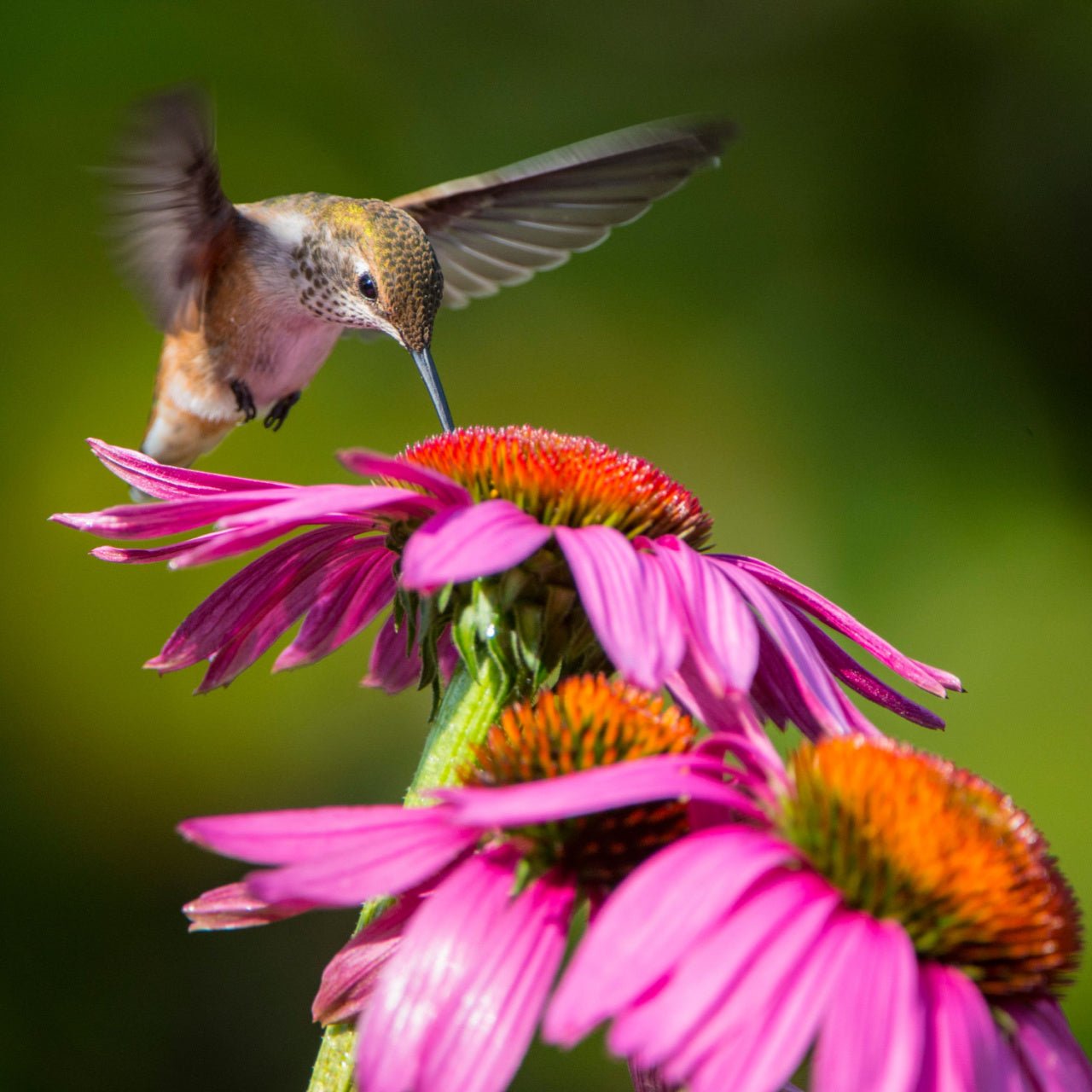


Weeping Cherry Tree
Stunning springtime pink blossoms
Vibrant fall foliage colors
Perfect for ornamental landscaping
Thrives in
ZONE 4ZONE 5ZONE 6ZONE 7ZONE 8ZONE 9This plant ships:
November 20251 Year Guarantee on all plants
Weeping Cherry Tree - Prunus subhirtella
The Weeping Cherry Tree is one of many Cherry Tree varieties that are popular for their pink, springtime blooms. This tree is a native of Japan and is immediately recognizable because of its pendulous, graceful hanging branches adorned with small blossoms. It is often planted near bodies of water where its weeping form can be reflected, but it would be perfect just about anywhere in your garden.
Plant Details - Weeping Cherry Tree
Family: Rosaceae
Light Requirement: Full sun
Water Needs: Moderate
Height: 15-40 ft
Spread: 15-25 ft
Growth Rate: Moderate
Soil Preference: Moist, well drained
Season of Interest: Spring
Flower Color: Pink, White
Fruit: Small red berries, ripen to black
Wildlife Value: Bees, Butterflies
Notable Characteristics - Weeping Cherry Tree
The flowers of the Weeping Cherry Tree emerge before the foliage does, sprouting small, five petal flowers that range from white to light pink. They grow in clusters along the thin, tapered branches which are quite flexible and droop downward as they grow, giving the tree a “weeping” effect. The bark is smooth and dark, offering a striking contrast to the light and bright blooms. The foliage emerges as a bronze color in the spring, providing a beautiful, glowing contrast to the pink flowers, before maturing to a dark green. In autumn, the leaves of this tree turn a pleasant yellow before dying off for the winter.
Landscape and Maintenance
Despite its delicate appearance, the Weeping Cherry Tree is quite robust and thrives well in the United States, especially in the southern and midwestern states, or hardiness zones 6-8. It prefers moist, well drained soil but can tolerate compacted or even dry soil once established. It thrives in full sun and is toxic to dogs, cats and horses. Unfortunately, it offers little to no winter interest, but it's mid-spring burst of flowers more than makes up for it. It is well worth having this dramatic beauty in your garden or yard.
This Is How Your Plants Will Look upon Delivery

Bloom Season
Spring
Bloom/Foliage Color
Pink
Height at Maturity
Under 25 Feet
Care
Weeping Cherry Trees thrive in well-drained soil and require regular watering, especially during dry periods. Mulch around the base to retain moisture and suppress weeds. Pruning should be done after blooming and fertilized annually in early spring.
Plant Reproduction
Weeping Cherry Tree spreads primarily through seed dispersal and suckers
Plant bare root trees during the dormant season in early spring or late fall (November through April). Dig the hole twice as wide as the roots so the soil is well-drained. Position the tree so the root flare is at or just above ground level. Fill the hole back with the soil you dug from and water. Maintain soil moisture, especially in the tree's early years, by providing deep, regular watering. Apply a 2-4 inch mulch away from the trunk at the base to retain moisture and suppress weeds. Prune trees during the first few seasons to establish strength and resilience, remove damaged branches, and continue maintenance pruning as the tree matures. Regularly inspect for pests and diseases and apply integrated pest management practices. Protect young trees from mechanical damage and extreme temperatures with tree guards, and stake them if necessary for support, removing the stakes after one or two years.
Shipping date depends on the date displayed and chosen when you order from the product's page.
We only accept returns on plants verified dead. If you think your plants have died, we offer a 1 year warranty, please use this File a Claim Link to verify dead plants and start with return warranty process.





Lush Green Foliage:
The tree’s rich green leaves turn a vibrant orange-red in the fall, adding seasonal interest and color to your landscape.
Spectacular Blossoms:
Kwanzan Cherry Trees produce stunning double-pink flowers in spring, creating a breathtaking display of color.
Low Maintenance:
This tree is relatively easy to care for, requiring minimal pruning and care while providing consistent beauty year after year.
Compact Size:
With a manageable size, the Kwanzan Cherry is perfect for smaller gardens or urban landscapes, offering beauty without taking up too much space.
Caring Tips
How do I care for my Weeping Cherry Tree?
Each box contains detailed care instructions and information about your product. But here's the basics.
Care Tips
Weeping Cherry Trees thrive in well-drained soil and require regular watering, especially during dry periods. Mulch around the base to retain moisture and suppress weeds. Pruning should be done after blooming and fertilized annually in early spring.
Light Requirements
The Weeping Cherry Tree thrives in full sun to partial shade. For optimal blooming and health, it prefers at least six hours of direct sunlight daily. In shadier locations, it may have reduced flowering and growth.
Hardy Planting Zones
4 • 5 • 6 • 7 • 8 • 9
Header
Use this content to share information about your store and products.
Frequently Asked Questions
How often should I water my plants?
How do I know if my plant is getting too much or too little sunlight?
What should I do to prepare my plants for winter?
What are the signs that my plant needs fertilizing?
How can I prevent pests from damaging my plants?
How do I choose the right plant for my climate zone?






